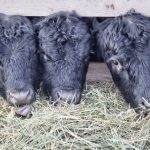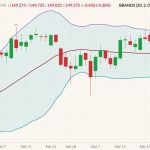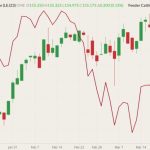For the week ending April 30, western Canadian feeder cattle prices were quite variable. Yearlings traded $8 lower as much as $5 higher. Severe discounts were noted on fleshier cattle; some auction barns reported the bulk of cattle over 800 pounds were medium to heavier flesh. Deferred live cattle futures were under pressure but the […] Read more

Klassen: Feedlot demand up prior to seasonal rally
Market for calves 'boiling hot' in Manitoba

Klassen: Adverse weather tempers feeder cattle market
Compared to last week, western Canadian feeder cattle markets traded $3-$4 on either side of unchanged. Southern Alberta experienced severe wind and dust storms last week which softened buying interest from a large portion of feedlot operators. At the same time, grass conditions are quite variable across the Prairies despite the recent precipitation. Cooler temperatures […] Read more

Klassen: Yearling prices soften but calves drop sharply
Compared to last week, western Canadian yearling prices unchanged to $4 lower on average while calves were down $4 to as much as $8 in some cases. The steer-heifer spread appeared to widen by $2-$3 for yearlings and $3-$6 for calves. Adverse weather set a negative tone and the market appeared to incorporate a risk […] Read more

Klassen: Feedlots value feeders on finished cattle price projections
Compared to the week ending March 2, western Canadian yearling prices were $3-$5 lower on average. Mid-weight replacements in the range of 650-800 lbs. were down $8-$12. Steer calves under 650 lbs. traded steady to $5 lower. Heifer calves under 650 lbs. were also down $8-$12. The market was hard to define for heifer calves […] Read more

Klassen: Steady fed cattle market supports feeder complex
Compared to last week, western Canadian yearling prices were $2-$4 higher on average while calves were steady to as much as $5 higher. Alberta packers were buying fed cattle on a dressed basis in the range of $273-$275 delivered; live prices were quoted at $161 f.o.b. the feedlot. There is a severe backlog of market-ready […] Read more

Klassen: Feeder market showing strength in deferred positions
Compared to last week, western Canadian yearling prices were $3-$5 lower on average while calves traded steady to $4 lower. Outside central Alberta, the steer-heifer spread appeared to widen by $2-$4. Strength in corn futures contributed to the defensive tone. Feedlot operators buying hand-to-mouth have been caught off guard with the recent jump in feed […] Read more

Klassen: Deferred live cattle futures underpin feeder cattle prices
Compared to last week, western Canadian feeder cattle markets traded $2-$4 on either side of unchanged. Major feedlot operations in Alberta continue to carry large numbers of market-ready cattle. The backlog of fed cattle appears to be worse than earlier anticipated. Yearlings were featured at auction barns in the main feeding regions of Alberta. Feedlot […] Read more

Klassen: Feeder cattle market experiences volatility
Compared to last week, western Canadian yearling markets traded $2 higher to as much as $5 lower depending on the region. Mid-weight calves weighing 650-800 lbs. were relatively unchanged while lighter weight calves were steady to $3 higher on average. June live cattle are off $9 from their mid-February highs while the December 2022 live […] Read more

Klassen: Surge in feed grain prices shocks feeder cattle market
Compared to last week, western Canadian yearling markets traded $3-$5 lower on average. Feeder cattle weighing 650 to 800 lbs. were relatively unchanged to $3 lower. Calves under 650 lbs. were steady to $4-$6 lower in Alberta, unchanged in Saskatchewan and $3-$5 higher in Manitoba. Fleshier yearlings and calves were heavily discounted last week with […] Read more

Klassen: Feeder market shows resilience
Compared to last week, western Canadian yearling markets traded $2-$3 on either side of unchanged. Calves in the range of 600-800 lbs. traded steady to $4 higher. Calves under 600 lbs. were $1-$2 higher in Alberta and Saskatchewan but traded $2-$3 lower in Manitoba. Alberta feedlot operators appeared to shrug off the geopolitical events last […] Read more

